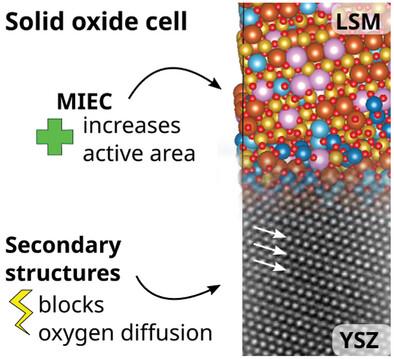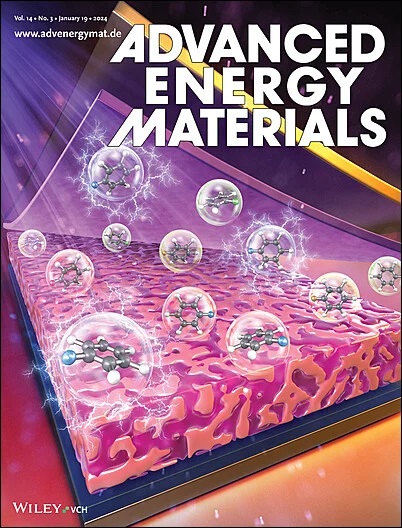Boon and Bane of Local Solid State Chemistry on the Performance of LSM-Based Solid Oxide Electrolysis Cells
IF 24.4
1区 材料科学
Q1 CHEMISTRY, PHYSICAL
引用次数: 0
Abstract
High-temperature solid oxide cells are highly efficient energy converters. However, their lifetime is limited by rapid deactivation. Little is known about the local, atomic scale transformation that drive this degradation. Here, reaction-induced changes are unraveled at the atomic scale of a solid oxide electrolysis cell (SOEC) operated for 550 h by combining high-resolution scanning transmission electron microscopy with first-principles and force-field-based atomistic simulations. We focus on the structural evolution of lanthanum strontium manganite (LSM)/yttria-stabilized zirconia (YSZ) regions and the corresponding solid–solid interface. It is found that the strong inter-diffusion of cations leads to the additional formation and growth of a multitude of localized structures such as a solid solution of La/Mn, nano-domains of secondary structures or antisite defects in the YSZ, as well as a mixed ion and electron conduction region in the LSM and complexion. These local structures can be likewise beneficial or detrimental to the performance, by either increasing the catalytically active area or by limiting the supply of reactants. The work provides unprecedented atomistic insights into the influence of local solid-state chemistry on the functioning of SOECs and deepens the understanding of the degradation mechanism in SOECs, paving the way towards nanoscopic rational interface design for more efficient and durable cells.

局部固态化学对lsm基固体氧化物电解电池性能的影响
高温固体氧化物电池是高效的能量转换器。然而,它们的寿命受到快速失活的限制。我们对驱动这种退化的局部原子尺度的转化知之甚少。在这里,通过将高分辨率扫描透射电子显微镜与第一性原理和基于力场的原子模拟相结合,在固体氧化物电解池(SOEC)运行550小时的原子尺度上揭示了反应引起的变化。我们重点研究了镧锶锰矿(LSM)/钇稳定氧化锆(YSZ)区域的结构演变及其相应的固-固界面。研究发现,阳离子的强相互扩散导致了大量局域结构的额外形成和生长,如La/Mn的固溶体,YSZ中二级结构的纳米域或反位缺陷,以及LSM和镀层中的混合离子和电子传导区。通过增加催化活性区域或限制反应物的供应,这些局部结构同样可以对性能有利或有害。这项工作为局部固态化学对soec功能的影响提供了前所未有的原子性见解,加深了对soec降解机制的理解,为纳米级合理界面设计铺平了道路,从而实现更高效、更耐用的电池。
本文章由计算机程序翻译,如有差异,请以英文原文为准。
求助全文
约1分钟内获得全文
求助全文
来源期刊

Advanced Energy Materials
CHEMISTRY, PHYSICAL-ENERGY & FUELS
CiteScore
41.90
自引率
4.00%
发文量
889
审稿时长
1.4 months
期刊介绍:
Established in 2011, Advanced Energy Materials is an international, interdisciplinary, English-language journal that focuses on materials used in energy harvesting, conversion, and storage. It is regarded as a top-quality journal alongside Advanced Materials, Advanced Functional Materials, and Small.
With a 2022 Impact Factor of 27.8, Advanced Energy Materials is considered a prime source for the best energy-related research. The journal covers a wide range of topics in energy-related research, including organic and inorganic photovoltaics, batteries and supercapacitors, fuel cells, hydrogen generation and storage, thermoelectrics, water splitting and photocatalysis, solar fuels and thermosolar power, magnetocalorics, and piezoelectronics.
The readership of Advanced Energy Materials includes materials scientists, chemists, physicists, and engineers in both academia and industry. The journal is indexed in various databases and collections, such as Advanced Technologies & Aerospace Database, FIZ Karlsruhe, INSPEC (IET), Science Citation Index Expanded, Technology Collection, and Web of Science, among others.
 求助内容:
求助内容: 应助结果提醒方式:
应助结果提醒方式:


